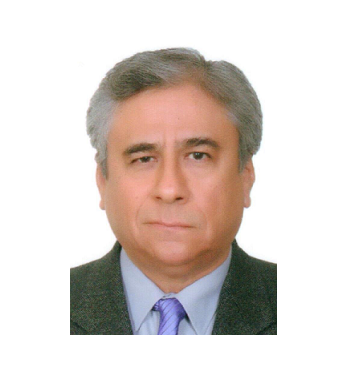
Dr. José Alfonso Pámanes García
ABSTRACT
In this conference different case studies of movement planning problems of industrial robots and humanoid robots are presented. The industrial robots considered are of 6 degrees of freedom (dof) for electric arc welding applications, operating simultaneously with cooperating positioning tables of one and two dof. Thus, a robot-table assembly becomes a redundant robotic system, whose motion planning poses a significant challenge for process engineers. Indeed, the simultaneous movements of the robot and the table must be coordinated in such a way that, during the execution of the desired task, the robot has an adequate kinematic performance, avoiding singular postures and avoiding collisions with its joint stops.
On the other hand, the problem of planning the gait of the 18 dof Bioloid humanoid robot is presented when it walks in an arbitrary direction on an inclined plane. The specification of the robot’s movements, in this case, also requires special treatment since the movements of the humanoid must be asymmetrical for it to maintain the desired direction of travel without losing its balance.
The presentation of the topics of this conference includes a brief introduction and a synthesized formulation of the problems posed and the proposed solution processes. Likewise, the presented methods are validated through simulation of virtual models of the robots and laboratory experiments.
BIOGRAPHY
José Alfonso Pámanes García was born in Torreón, Coahuila in 1953. He received the degree of Doctor of Mechanics from the University of Poitiers, in Poitiers, France, in 1992; the degree of Master of Science in Mechanical Engineering from the National Polytechnic Institute in Mexico City, in 1984; and the title of Industrial Mechanical Engineer from the National Technological Institute of Mexico campus La Laguna in 1978, in Torreón, Coahuila, Mexico.
From 1974 to 1975 he served as production supervisor for “Aluminio Industrial de la Laguna, S.A. de C.V.” and from 1975 to 1977 he was a professor in the academic program of industrial engineering at the Technological Institute of León, Guanajuato. From 1977 to 1992 he served as a professor at TecNM-IT La Laguna in the mechanical engineering program in the areas of mechanical design, kinematics and dynamics of machines. From 1992 to date he works at IT La Laguna as a professor-research for the mechatronics engineering, master’s and doctorate programs in Electrical Engineering (in the research line for Mechatronics and Control), in the areas of design, modeling and planning of serial robot movements, parallel and humanoid. He has directed and co-directed more than 50 Bachelor’s, Master’s and PhD thesis. In 2002 he founded the master’s program in mechanical engineering sciences at the FIME-Torreón of the Autonomous University of Coahuila and collaborated as a professor in said program from 2002 to 2015.
He has participated in multiple research and development projects, as well as national and international scientific cooperation. He has authored and co-authored 115 scientific articles in national and international journals and conference proceedings. He has made stays as visiting professor at the Institute P Prime associated with the University of Poitiers, France; at the Laboratoire de Sciences du Numérique (LS2N) associated with l’École Centrale de Nantes, France; and at the Institute of Systems and Robotics (ISR), of the Instituto Superior Técnico (IST) of Lisbon, Portugal. He has been a reviewer for multiple scientific articles for the Mechanism and Machine Theory journal, the ASME Journal of Mechanisms and Robotics, and various national and international conferences. He is a member of the International Federation for Promotion of Science of Machines and Mechanism (IFToMM) since 1994. He is a founding member of the Mexican Society of Mechanical Engineering (SOMIM) since 1994, of which he was Vice President of Theoretical Mechanism from 2014 to 2016; and founding member of the Mexican Robotics Association (AMRob) since 1997, of which he was Vice President (from 1999 to 2001), and President (from 2001 to 2003). He has received various recognitions from scientific and governmental organizations.
